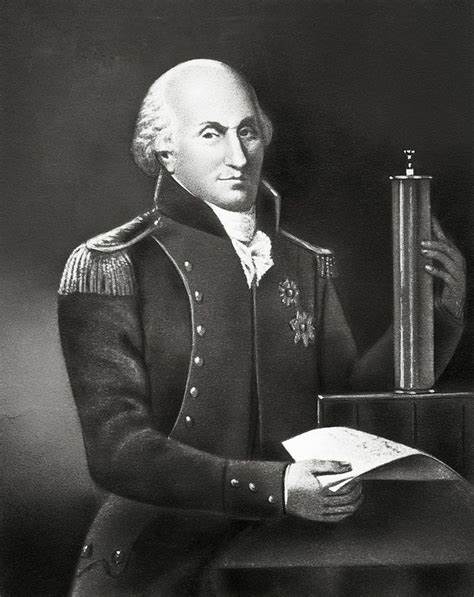
Charles -Agustin de Coulomb (1736 – 1806) was born in France and lived at a time of radical social upheaval and governmental change. His most famous discovery was an inverse-square law published in 1785, known today as Coulomb’s Law, that quantifies the force with which stationary electrically charged particles repel or attract each other.
The Life of Charles Coulomb
Carles Coulomb was born on June 14, 1736, in Angoulême, France. Both of his parents came from local aristocratic families, and family moved to Paris early in his childhood. In Paris, Coulomb received a comprehensive education in mathematics, physics and engineering at the Collège des Quatre-Nations (College of the Four Nations). His exceptional aptitude for mathematics provided him the opportunity to join the French army in 1761 as an engineer where he was responsible for a variety of engineering projects ranging from structural fortifications to soil mechanics over a period of two decades. Throughout his military career he began to become interested in research experimentation, presenting his first work in applied mechanics to the Academie des Sciences in Paris in 1773. In 1777 he submitted his most famous work on torsion balances winning him a share of the Grand Prix of the Academie des Sciences, an award he also won two years later based on the construction of a fort made entirely out of wood.
By the late 18th century, the study of electricity and magnetism was rapidly advancing. In 1785 he published what later became known as Coulomb’s Law. It described the relationship between electrically charged particles as in inverse-square law. He noted a similar relationship between magnetic poles. These discoveries eventually led to the development of the theory of electromagnetism. For this valuable work the SI unit of electric charge was name in his honor in 1908.